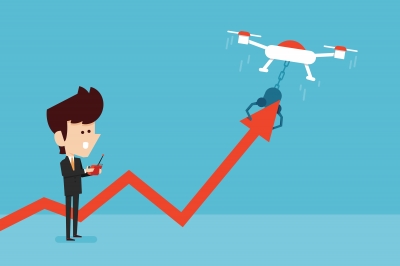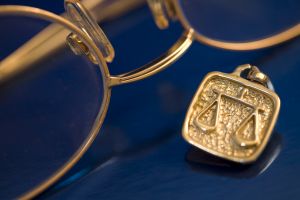
Drones – The sky’s the limit
 Drones might be most commonly associated with security and public safety missions, but they’re also helping with everything from distance learning to scientific research. In my opinion, the impact of drones will be tremendous over time, and there are a few great examples of things we can already do today using drones that would have an immense impact with many industries.
Drones might be most commonly associated with security and public safety missions, but they’re also helping with everything from distance learning to scientific research. In my opinion, the impact of drones will be tremendous over time, and there are a few great examples of things we can already do today using drones that would have an immense impact with many industries.
Regardless of the lagging government policies and regulations on drones, the fast-growing global drone market is getting investments and efforts to advance this new computing market. According to a recent report from BI Intelligence, the market for commercial or civilian drones will grow at a compound annual growth rate (CAGR) of 19% between 2015 and 2020.
Drones are now widely used in civilian segments and creating enormous possibilities for the future. We have seen live footage of last year’s Golden Globes award ceremony broadcast by drones, rescue teams relying on drones to navigate after the 7.8-magnitude earthquake that hit Nepal, and mysterious drones spying on a French team training session before the World Cup.
Pop culture has also used drones as one of the advance techniques to develop high quality programs. In 2012, the James Bond film “Skyfall” used drones to film the scene where 007 raced across the rooftops of Istanbul, and in September 2014, the Federal Aviation Administration (FAA) approved exemption of using commercial drones by 6 filming companies for certain movies.
At the same time, world-class mountaineer David Lama and his climbing partner Peter Ortner used a remote-control helicopter to shoot breathtaking images of the Karakoram Mountains. Outdoor clothing and equipment companies Mammut and Dedicam lead the joint effort.
Moreover, a study from the American Red Cross shows that the flexibility of drones allows for a quick reaction to devastating events, such as hurricanes or superstorms, which is crucial to save lives. Also, defense contractor Lockheed Martin partnered with Project Lifesaver to develop a drone that can locate missing people with cognitive disabilities.
Another cool use for drones was found by Puget Sound seafood that uses a drone to protect consumers from food poisoning. The environmental sample processor (ESP) retrieves, analyses, and provides reports on water quality, indicating any possible contamination. Those reports get sent to Northwest Fisheries Science Center, which monitors the health of shellfish in the region.
Drones have also proved essential for wildlife studying. The U.S. Geological Survey Unmanned Aircraft Systems (UAS) Project Office teamed with the University of Idaho, Washington State University, the Bureau of Land Management, and Idaho Fish and Game to determine habitat quality for two threatened species, the pygmy rabbit and sage grouse. The remote operations of the drones gave researchers full access view of the animals’ habitat without disturbing them.
Without the proper protections, drones can be dangerous. The same drones that deliver food and water can also deliver bombs and poison. However, I believe that we’ll eventually find the positive uses outweigh the negative ones, and we’ll develop the right systems to make them secure.
Photo source: http://www.freedigitalphotos.net/


